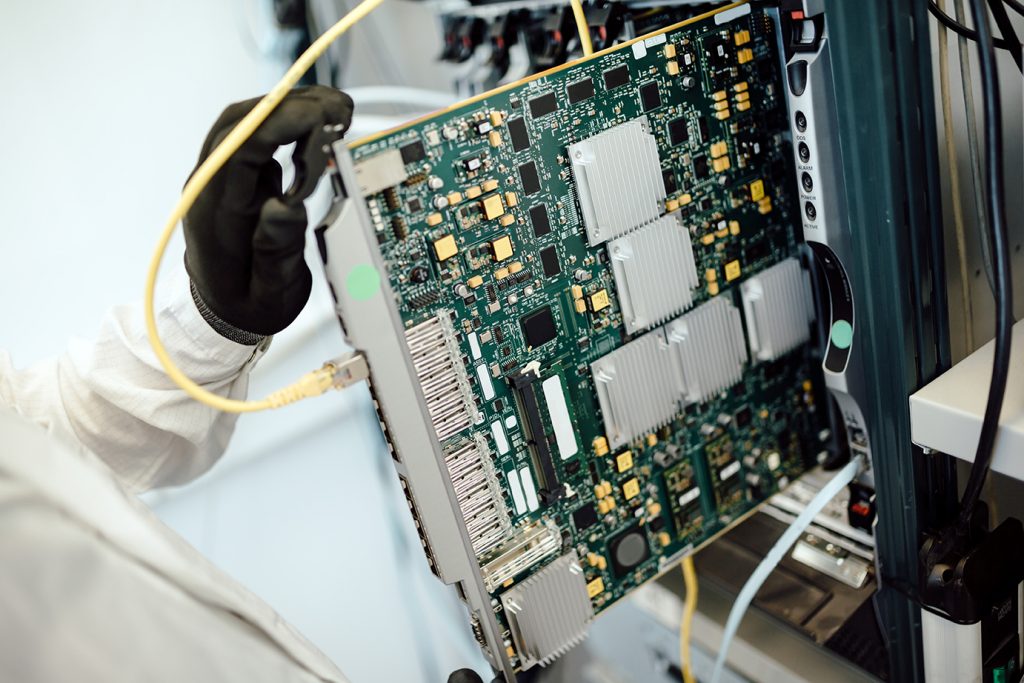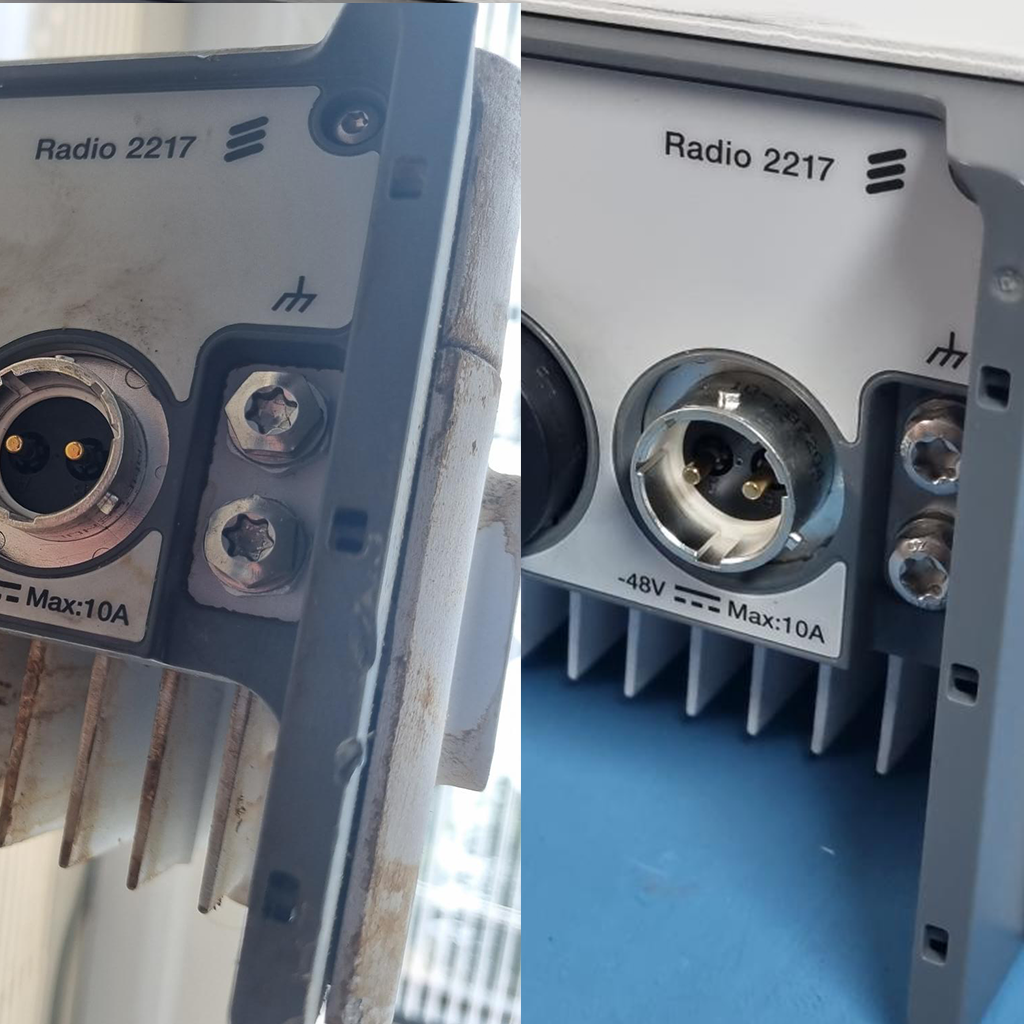One of the most important parts of telecommunication connectivity lies in the infrastructure of base stations. These stations, dispersed strategically across landscapes, enable the seamless flow of data, powering our digital lives. Over time, the architecture of these base stations has undergone a remarkable evolution, transitioning from traditional setups to modern, highly efficient designs, prominently featuring Active Antenna Units (AAUs). In this article, we delve into the essence of AAUs and explore the transformative changes they’ve brought about in base station architecture.
Understanding Traditional Base Station Architecture
Traditional base station architecture refers to the conventional setup of telecommunications infrastructure before the emergence of modern technologies like Active Antenna Units (AAUs) and Software-Defined Networking (SDN). In this traditional architecture, base stations were composed of distinct components, each serving specific functions in the communication process.
The following equipment is typically used in traditional Base Station architecture:
Antennas
At the heart of every base station is the antenna, which serves as the interface between the radio frequency signals and the surrounding environment. Antennas are responsible for transmitting and receiving electromagnetic waves to and from mobile devices within their coverage area.
Radio Units
The radio unit, also known as the transceiver, is responsible for converting electrical signals from the baseband processing unit into radio frequency signals that are transmitted through the antenna. Similarly, it receives incoming radio signals from mobile devices and converts them back into electrical signals for further processing.
Baseband Processing Unit (BBU)
The baseband processing unit handles the digital signal processing tasks within the base station. It is responsible for tasks such as encoding and decoding data, modulation and demodulation of signals, channel coding, error correction, and various other functions necessary for communication.
Ancillary Equipment
In addition to the antenna, radio unit, and BBU, traditional base stations typically include various ancillary equipment such as power supplies, cooling systems, and physical infrastructure for housing and protecting the components.
Enter the Era of Active Antenna Units (AAUs)
The advent of Active Antenna Units (AAUs) marked a paradigm shift in base station architecture. AAUs replace the standard antenna to integrate multiple functionalities into a single, compact unit, consolidating the antenna, radio transceiver, and digital signal processing capabilities. Unlike their traditional counterparts, AAUs are characterised by their modular and scalable nature, enabling easier deployment and maintenance.
AAUs represent a significant evolution from traditional passive antennas, integrating active radio components directly into the antenna unit.
What’s inside a typical AAU?
Antenna Elements
AAUs incorporate multiple antenna elements or arrays within the same housing. These antenna elements are responsible for transmitting and receiving radio frequency signals to and from mobile devices within the coverage area. Antenna configurations may vary depending on the specific requirements of the deployment, such as beamforming capabilities for directional signal transmission.
Radio Transceivers
AAUs are equipped with integrated radio transceivers, also known as Remote Radio Units (RRUs), that handle the conversion of baseband signals to radio frequency signals for transmission and vice versa. These transceivers operate across various frequency bands and support multiple radio access technologies, such as LTE, 5G, and future wireless standards.
Digital Signal Processing (DSP) Unit
The DSP unit within the AAU performs advanced signal processing functions, including modulation, demodulation, beamforming, channel coding, and error correction. By incorporating DSP capabilities directly into the AAU, operators can optimise signal quality, reduce latency, and enhance overall network performance.
Power Amplifiers
AAUs include built-in power amplifiers to amplify the radio frequency signals before transmission to ensure adequate coverage and signal strength across the cell. These amplifiers are designed to operate efficiently while minimising power consumption, contributing to energy savings and environmental sustainability.
Digital Front-End (DFE) Components
Modern AAUs often incorporate digital front-end components, such as analog-to-digital converters (ADCs) and digital-to-analog converters (DACs), to interface with the baseband processing unit (BBU) or central processing unit (CPU) of the base station. These components facilitate the exchange of digital signals between the AAU and the core network infrastructure.
Power and Cooling Systems
AAUs are equipped with internal power supplies and cooling systems to ensure reliable operation and thermal management in various environmental conditions. These systems are designed to maintain optimal performance while minimising energy consumption and reducing the need for external infrastructure.
Remote Management and Control Interfaces
AAUs feature remote management and control interfaces, such as Ethernet or fiber-optic connections, that enable operators to monitor and configure the units remotely. This facilitates centralised network management, fault detection, performance optimisation, and software upgrades without the need for on-site maintenance.
Key Advantages of Modern AAUs
AAUs (Active Antenna Units) offer several advantages over traditional base station antennas, making them indispensable in modern telecommunications infrastructure:
Enhanced Spectral Efficiency: AAUs support advanced technologies like Massive MIMO (Multiple Input Multiple Output), which dramatically improve spectral efficiency by transmitting multiple data streams simultaneously to multiple users. This capability allows for a significant increase in network capacity and throughput compared to traditional base stations.
Improved Coverage and Capacity: With beamforming capabilities, AAUs can dynamically adjust antenna beams to focus signal energy where it’s needed most. This results in better coverage, reduced interference, and improved signal quality, especially in dense urban areas or environments with challenging propagation conditions.
Compact and Flexible Design: AAUs integrate radio transceivers, amplifiers, and digital signal processing components directly into the antenna unit, eliminating the need for separate equipment cabinets. This compact design not only reduces space requirements but also offers greater flexibility in site selection and deployment.
Remote Configuration and Optimization: AAUs often feature remote electrical tilt (RET) functionality, allowing operators to adjust antenna tilt angles and beam configurations remotely. This capability facilitates quick optimization of coverage and capacity in response to changing network conditions or user demand, without the need for on-site visits.
Centralised Processing and Virtualisation: In Cloud-RAN (Radio Access Network) architectures, AAUs primarily handle radio frequency (RF) functions, while baseband processing is centralized in data centres. This centralized processing approach enables better resource utilization, scalability, and cost-efficiency, as multiple AAUs can be served by a common pool of baseband processing resources.
Support for Multi-band and Multi-RAT Deployments: AAUs are designed to support multiple frequency bands and radio access technologies (RATs) within a single unit. This flexibility allows operators to deploy base stations capable of serving diverse spectrum allocations and accommodating various generations of wireless technologies, simplifying network planning and optimisation.
Conclusion
In conclusion, the evolution of base station architecture from traditional setups to modern AAUs represents a remarkable advancement in telecommunications technology. These compact, versatile units have revolutionised the way networks are deployed, managed, and optimised, ushering in an era of connectivity that is faster, more reliable, and more responsive to the needs of our increasingly digital world. As we continue to embrace the possibilities of 5G and beyond, AAUs will undoubtedly remain at the forefront of innovation, shaping the future of communication infrastructure for years to come.
Are you looking for AAU products or support with your Base Station Equipment?
At Carritech, we understand the critical importance of reliable base station equipment in maintaining seamless communication networks. Whether you’re in search of AAU products or require expert support to optimise your existing infrastructure, we’re here to help.
We have an extensive range of Active Antenna Unit (AAU) products in stock. From complete units to essential components, we can help you to enhance network performance and scalability.
Our team of experienced telecom experts is dedicated to delivering personalised solutions tailored to your specific requirements.
Partnering with Carritech means gaining access to industry-leading expertise, reliability, and a trusted partner dedicated to supporting your network. Whether you’re a telecom operator, equipment reseller, or network integrator, we’re here to empower your business with the tools and support you need to thrive in today’s dynamic telecommunications landscape.
Get in touch with us today to discover how Carritech can help you find the right AAU products or support solutions for your base station equipment needs.

